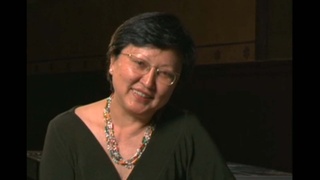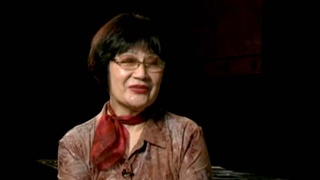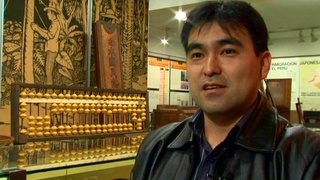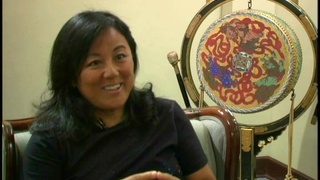Interviews
The identity of Nikkei Canadians seen in the Buddhist Church (Japanese)
(Japanese) The Buddhist community in Toronto began back in 1946. I think that 1946 was a really intriguing period in time. Before, during, and after the war, nobody wanted to be seen as a Japanese American, so it was a time period where they were increasingly moving away from things related to Japan, like Japanese culture. Amidst all of that, I wondered why a Buddhist church came into being in 1946, in Toronto; why would they build something that can be seen as a symbolic representation of Japanese culture? Well, the answer was an easy thing to understand. Their community was so defined—it was easy for me to understand it.
Let me explain. So the people from the church let me interview them in depth, and so when I asked about it, just like I had thought, they said their parents were Buddhist. Some said they went to a Buddhist church in Vancouver. If you ask why in the world these next generation, these second generation people would start a Buddhist church over here, they’d answer that it was because they wanted to become Canadian—a good Canadian, a Canadian who can make worthwhile contributions to Canada…and in order to become one, you must be a good Japanese person, and a good Nikkei person. So I asked, “Why do you hold such pride in being Nikkei?” to which they answered, “In Buddhism, and in Buddhists churches, we value the stellar culture of Japan—the idea of sharing and working together with everyone,” and that the path to becoming a good Canadian is created by cherishing the culture of their ancestors and carry it along with pride. So I think it was about them having confidence, you know—it’s called “self-esteem,” right? …There was a need to hold some self-respect. That’s probably why many people were shaken during the war, you know, because they had this feeling that that they’d face discrimination just because they were Nikkei, or had a relation to Japan. Their self-esteem was shaken. Very much a source for an identity crisis… But these Canadian Nikkei, on the other hand, held on to their Japanese consciousness stronger than ever and built the Buddhist church, believing that it would serve as a path to becoming respected Canadians.
Date: October 7, 2005
Location: California, US
Interviewer: Ann Kaneko
Contributed by: Watase Media Arts Center, Japanese American National Museum
Explore More Videos

Chose to go back to Japan
(b.1924) Japanese Canadian Nisei. Interpreter for British Army in Japan after WWII. Active in Japanese Canadian community

Social activities in Tashme
(b.1920) Japanese Canadian Nisei. Established the Ikenobo Ikebana Society of Toronto


Reason to come back to Canada in 1954
(b. 1922) Canadian Nisei who was unable to return to Canada from Japan until 1952

Nikkei means fusion (Spanish)
(b. 1969) Former president of Centro Nikkei Argentino.

To be more Japanese than you really are (Spanish)
(b. 1950) Nisei Chilean, Businessman


Conflicting relations between Argentina and Japan (Spanish)
(1925-2014) La Plata Hochi, Journalist


Japan's impact on the image of Nikkei in Brazil (Portuguese)
Former Director, Museu Histórico da Imigração Japonesa no Brasil

Change in sense of Nikkei Brazilian identity over time (Portuguese)
Former Director, Museu Histórico da Imigração Japonesa no Brasil

Japanese language education for Paraguayan Nisei (Spanish)
Nisei Paraguayan, Researcher


Yes, Nikkei culture exists (Spanish)
(b. 1974) Director of Ryukyu Matsuri Daiko in Peru

I’m a Japanese, Peruvian… who am I? (Spanish)
(b. 1962) Peruvian Poet, Okinawan descendant
